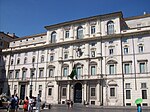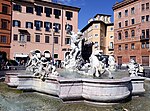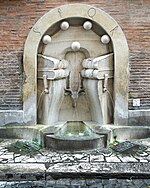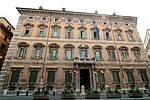Stadium of Domitian
1st-century establishments in Italy80s establishments in the Roman Empire86Ancient Roman circuses in RomeBuildings and structures completed in the 1st century ... and 2 more
DomitianRome R. VI Parione

The Stadium of Domitian (Italian: Stadio di Domiziano), also known as the Circus Agonalis, was located to the north of the Campus Martius in Rome, Italy. The Stadium was commissioned around AD 80 by the Emperor Titus Flavius Domitianus as a gift to the people of Rome, and was used mostly for athletic contests.
Excerpt from the Wikipedia article Stadium of Domitian (License: CC BY-SA 3.0, Authors, Images).Stadium of Domitian
Piazza Navona, Rome Municipio Roma I
Geographical coordinates (GPS) Address Nearby Places Show on map
Geographical coordinates (GPS)
| Latitude | Longitude |
|---|---|
| N 41.898888888889 ° | E 12.473055555556 ° |
Address
Piazza Navona
Piazza Navona
00186 Rome, Municipio Roma I
Lazio, Italy
Open on Google Maps










